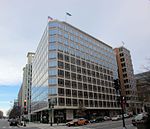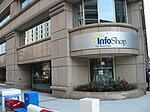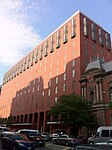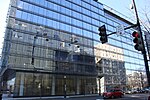U.S. Global Change Research Program
The United States Global Change Research Program (USGCRP) coordinates and integrates federal research on changes in the global environment and their implications for society. The program began as a presidential initiative in 1989 and was codified by Congress through the Global Change Research Act of 1990 (P.L. 101-606), which called for "a comprehensive and integrated United States research program which will assist the Nation and the world to understand, assess, predict, and respond to human-induced and natural processes of global change."Thirteen departments and agencies participate in the USGCRP, which was known as the U.S. Climate Change Science Program from 2002 through 2008. The program is steered by the Subcommittee on Global Change Research under the Committee on Environment, Natural Resources and Sustainability, overseen by the Executive Office of the President, and facilitated by a National Coordination Office. Since its inception, the USGCRP has supported research and observational activities in collaboration with several other national and international science programs. These activities led to major advances in several key areas including: Observing and understanding short- and long-term changes in climate, the ozone layer, and land cover; Identifying the impacts of these changes on ecosystems and society; Estimating future changes in the physical environment, and vulnerabilities and risks associated with those changes; and Providing scientific information to enable effective decision making to address the threats and opportunities posed by climate and global change.These advances have been documented in numerous assessments commissioned by the program and have played prominent roles in international assessments such as those of the Intergovernmental Panel on Climate Change. Program results and plans are documented in the program's annual report, Our Changing Planet.
Excerpt from the Wikipedia article U.S. Global Change Research Program (License: CC BY-SA 3.0, Authors).U.S. Global Change Research Program
Pennsylvania Avenue Northwest, Washington
Geographical coordinates (GPS) Address Nearby Places Show on map
Geographical coordinates (GPS)
| Latitude | Longitude |
|---|---|
| N 38.89931 ° | E -77.040305 ° |
Address
Pennsylvania Avenue Northwest 1717
20006 Washington
District of Columbia, United States
Open on Google Maps







